Tucked into the Himalayan foothills, Dharamshala has transformed into something of a spiritual magnet for travelers worldwide. This hill station in Himachal Pradesh serves as both home to the Dalai Lama and headquarters for Tibet’s government-in-exile. What makes this place special isn’t just its stunning mountain views — it’s the living Buddhist heritage that permeates every corner, especially through its remarkable collection of monasteries.
These aren’t museum pieces gathering dust. They’re vibrant centers where monks continue their ancient routines of prayer, study, and meditation while welcoming curious visitors. Here is a list of 16 Dharamshala monasteries that open their doors to those seeking spiritual insight or simply wanting to experience something profoundly different.
Namgyal Monastery
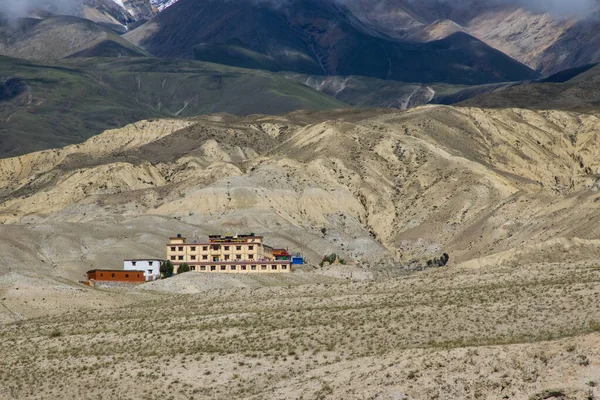
As the Dalai Lama’s personal monastery, Namgyal holds unmatched significance among Dharamshala’s spiritual sites. Originally established in 1575, it found its current home in McLeod Ganj after the 1960 Tibetan exodus, though the transition posed significant challenges for the displaced community.
Around 200 monks call this place home, maintaining daily prayers and rituals that have remained unchanged for centuries. The monastery’s extensive library houses Buddhist texts that scholars travel thousands of miles to study, yet the atmosphere remains surprisingly welcoming to casual visitors who simply want to observe.
Tsuglagkhang Complex
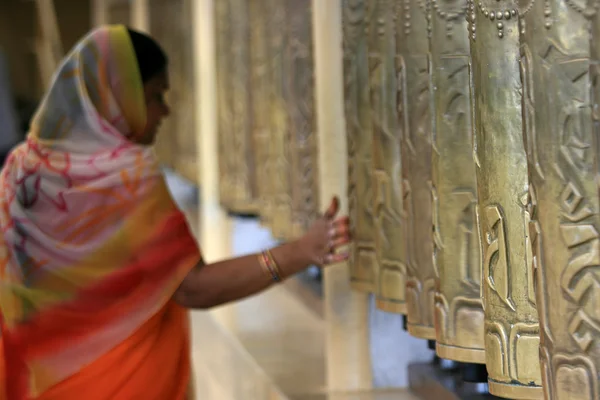
Think of Tsuglagkhang as the spiritual and administrative heart of the Tibetan exile community. Rather than a single building, it’s actually a collection of structures that includes the main temple, residential areas, and various offices. Pilgrims from every continent gather here to spin prayer wheels and offer prayers — the diversity of visitors is remarkable.
Inside the main temple, intricate murals tell Buddhist stories through vibrant colors and detailed artwork, while massive Buddha statues create an atmosphere that’s both grand and intimate.
Like Travel Pug’s content? Follow us on MSN.
Gyuto Tantric Monastery
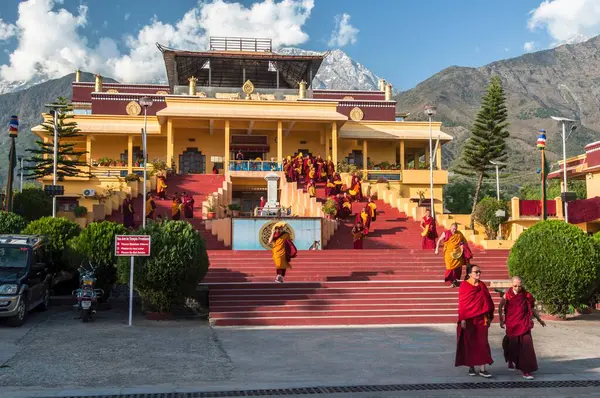
Gyuto specializes in something you won’t find at most monasteries — tantric Buddhism, which involves advanced practices that can take decades to master. Founded way back in 1474 in Tibet, the monastery was rebuilt in Dharamshala in 1971 with a specific mission: preserving complex spiritual traditions.
The deep, harmonic chanting here creates an almost otherworldly experience that visitors often describe as transformative. While the practices might seem mysterious to outsiders, the monks are surprisingly approachable when it comes to explaining their work.
Gyuto Ramoche Temple
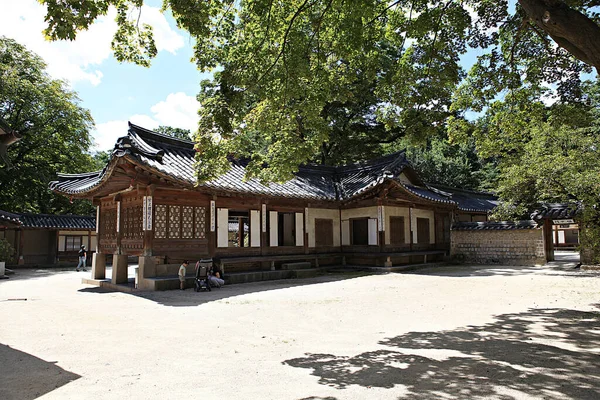
This temple serves as the main prayer hall for the Gyuto Tantric Monastery — and honestly, it’s one of the most visually stunning religious buildings in the region. Traditional Tibetan architecture shines through its golden roof and colorful prayer flags that dance in the mountain breeze.
A massive Buddha Shakyamuni statue dominates the interior, surrounded by smaller deities that represent different aspects of Buddhist teaching. The thangka paintings covering the walls aren’t just decorative; they’re sophisticated meditation aids that help practitioners focus their minds during spiritual practice.
Nechung Monastery
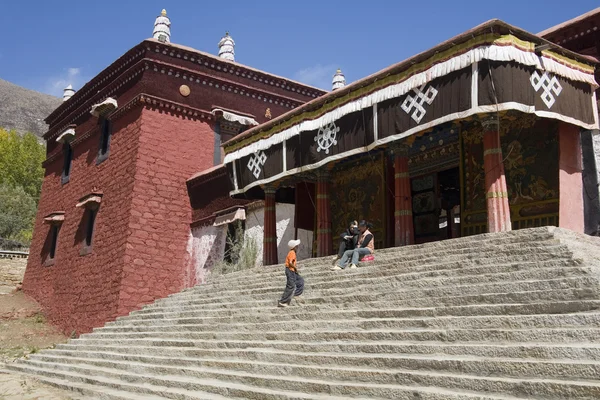
Nechung holds a unique position in Tibetan Buddhism as home to the State Oracle — a spiritual advisor who traditionally counsels the Dalai Lama on important decisions. Originally built in 12th century Tibet, it was reconstructed in Dharamshala in 1985 with careful attention to preserving its mystical traditions.
The main hall features murals depicting protector deities and spiritual guardians that might seem intimidating to newcomers, yet they represent protective forces in Buddhist cosmology. Visitors often notice the atmosphere here feels more intense than other monasteries, which makes sense given the specialized rituals performed here.
Like Travel Pug’s content? Follow us on MSN.
Dip Tse Chok Ling Monastery
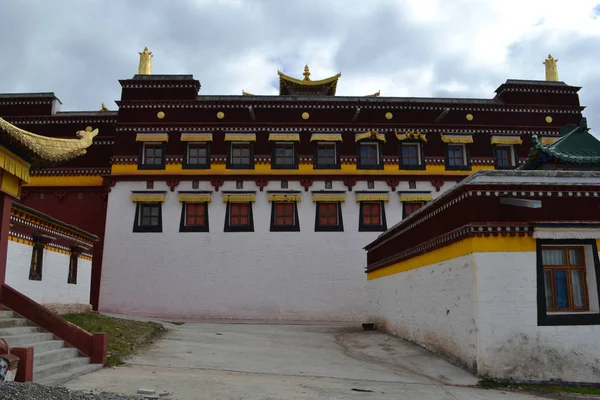
Also known as Ganden Monastery, this institution represents the Gelug school — one of the four main branches of Tibetan Buddhism. Located about 3 miles from McLeod Ganj, it feels like a hidden sanctuary tucked away in the hills. Around 300 monks live and study here, following schedules that would challenge most people’s dedication to routine.
The monastery’s courtyard often echoes with traditional debating practices where monks clap their hands and stamp their feet — it’s theatrical yet remains deeply serious, representing centuries-old methods of testing religious knowledge.
Dolma Ling Nunnery
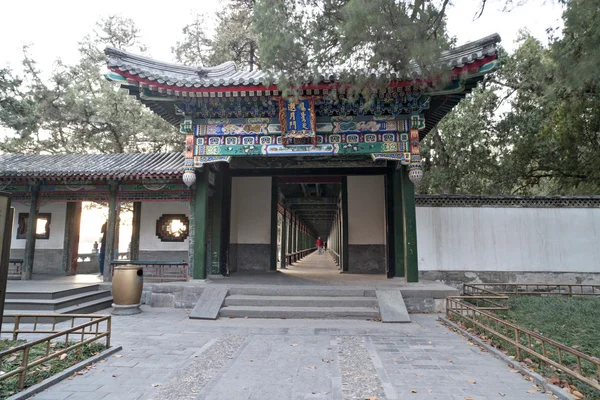
Dolma Ling breaks important ground as one of the few institutions dedicated specifically to Buddhist nuns’ education and spiritual development. Established in 1991, it provides a supportive environment where over 200 nuns from Tibet, India, and other countries pursue their religious studies.
The curriculum blends traditional Buddhist philosophy with modern subjects like English and computer skills — an approach unimaginable in traditional Tibet. Visitors consistently comment on the empowerment and dedication they witness here, as the nuns work to preserve ancient teachings while adapting to contemporary challenges.
Kalachakra Temple
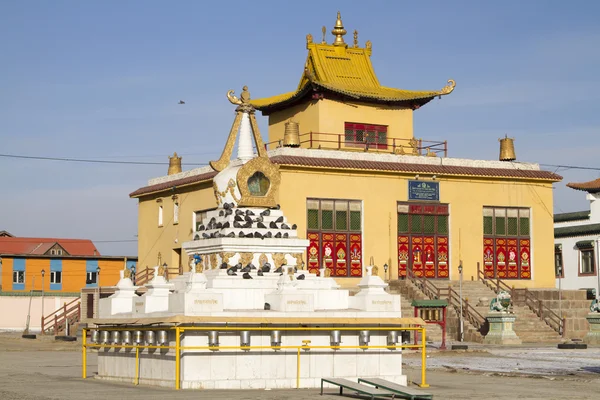
The Kalachakra Temple specializes in one of Buddhism’s most complex systems — the Kalachakra tantra, which represents an incredibly sophisticated approach to meditation and philosophy. Built specifically to house the intricate Kalachakra mandala, this temple showcases geometric representations of the universe according to Buddhist cosmology.
The walls display detailed murals depicting 722 deities from the Kalachakra system — a visual complexity that can overwhelm first-time visitors. Though the artwork serves as a three-dimensional textbook for advanced practitioners, even casual observers find themselves captivated by the sheer artistic achievement.
Like Travel Pug’s content? Follow us on MSN.
Tushita Meditation Centre
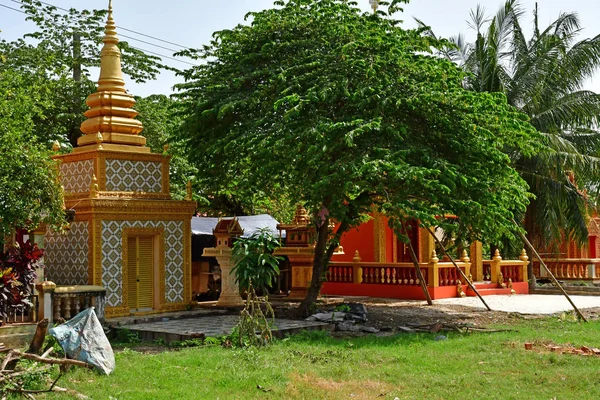
Tushita takes a refreshingly accessible approach to Buddhist practice, designing programs specifically for Western visitors and Buddhism beginners. Founded in 1972, this center offers meditation courses, philosophy classes, and retreats in an environment that encourages questions rather than silent reverence.
Its hillside location, about 3 miles from McLeod Ganj provides stunning Kangra Valley views — perfect for contemplation. Unlike traditional monasteries where formal protocols matter, Tushita creates space for discussion and experimentation, making it ideal for those who want to explore Buddhist practices without intimidation.
Sherab Ling Monastery
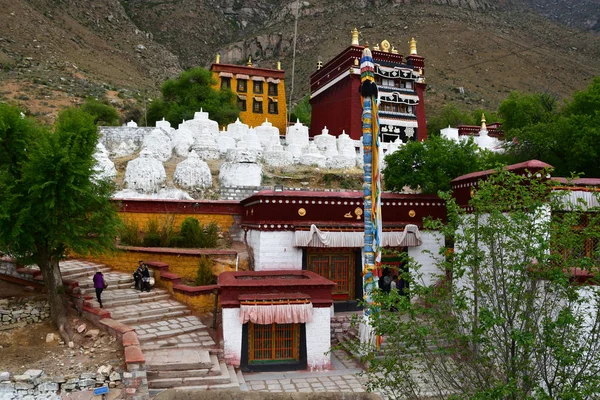
Sherab Ling represents the Kagyu school of Tibetan Buddhism and was established in 1985 under the 12th Tai Situpa’s guidance, though the building itself looks like it could’ve existed for centuries. The monastery’s architecture cleverly combines traditional Tibetan design with modern construction techniques, creating something that feels both ancient and contemporary.
A 17-foot Buddha Maitreya statue dominates the main temple, surrounded by smaller statues and intricate decorations that showcase traditional craftsmanship. The monastery also functions as an art preservation center, where resident artists create thangka paintings and sculptures using techniques passed down through generations.
Norbulingka Institute
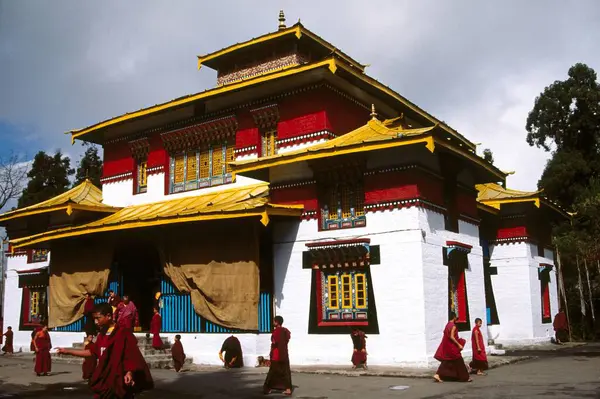
The Norbulingka Institute goes way beyond typical monastery functions, serving as a comprehensive center for preserving Tibetan culture, arts, and crafts. Established in 1988, this institute combines spiritual practice with cultural preservation in ways that feel both innovative and respectful of tradition.
Visitors can watch skilled artisans at work, creating thangka paintings, wood carvings, and metalwork using ancient techniques. The institute’s beautiful gardens and traditional architecture create an atmosphere that transports visitors to old Tibet, while the gift shop offers authentic crafts that support the preservation mission.
Like Travel Pug’s content? Follow us on MSN.
Mindrolling Monastery
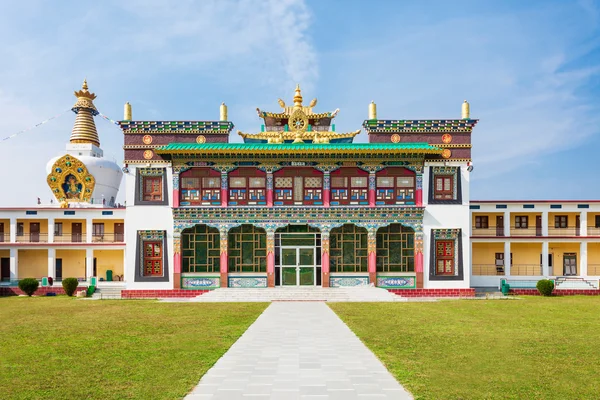
Mindrolling belongs to the Nyingma school, which proudly claims to be the oldest of the four main Tibetan Buddhist schools. Established in Dharamshala in 1965, this monastery emphasizes traditional meditation practices and the preservation of ancient Buddhist texts.
The main temple features beautiful murals and statues that represent the rich artistic traditions of the Nyingma school, though the real treasures lie in the monastery’s library. Rare manuscripts and texts, some dating back centuries, provide insight into how Buddhist thought and practice have evolved.
Ganden Choeling Nunnery
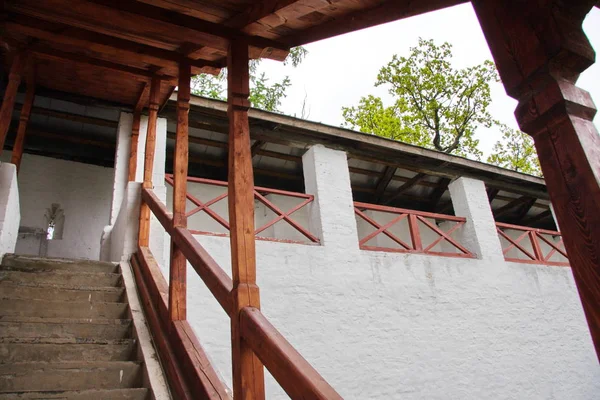
Ganden Choeling Nunnery, established in 1987, demonstrates the vital role women play in preserving Buddhist traditions. Around 100 nuns follow a rigorous schedule of study and practice that mirrors what their male counterparts do in monasteries, though the atmosphere feels distinctly different.
The nunnery’s simple yet elegant architecture reflects the humble approach to spiritual life that characterizes much of Buddhist practice. Visitors frequently comment on the peaceful atmosphere and the dedicated approach of the nuns, who balance traditional religious practices with modern educational opportunities.
Tergar Monastery
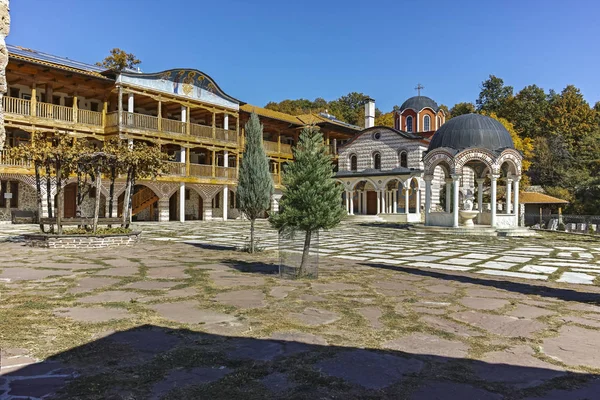
Tergar Monastery represents a contemporary approach to Buddhist practice while maintaining deep roots in traditional teachings. Founded by Mingyur Rinpoche, this monastery focuses on making meditation accessible to modern practitioners without diluting authentic Buddhist lineages.
The monastery’s programs include both traditional monastic training and courses designed for lay practitioners from around the world. The building itself combines traditional Tibetan architectural elements with modern amenities, creating a space that feels both sacred and practical for contemporary spiritual seekers.
Like Travel Pug’s content? Follow us on MSN.
Sakya Monastery
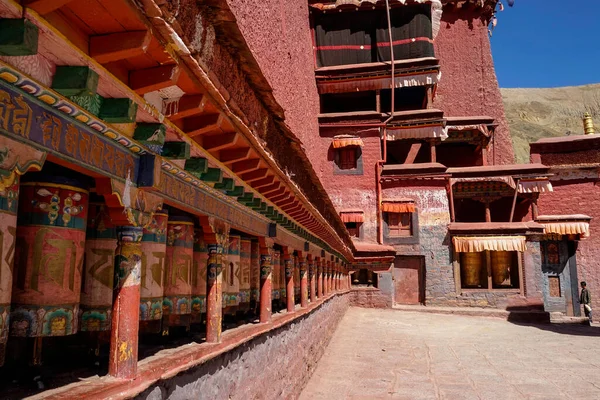
Sakya Monastery represents the Sakya school of Tibetan Buddhism and was established in Dharamshala to continue traditions that originated in Tibet centuries ago. The monastery’s distinctive architecture features the characteristic red, white, and blue colors that immediately identify Sakya institutions to those familiar with Tibetan Buddhism.
The main temple houses important relics and texts from the Sakya tradition, while the monks here specialize in particular forms of Buddhist philosophy and practice unique to their school. Visitors often find the monastery’s atmosphere more scholarly than some others, reflecting the Sakya tradition’s strong emphasis on intellectual understanding alongside meditation practice.
Yiga Choezin
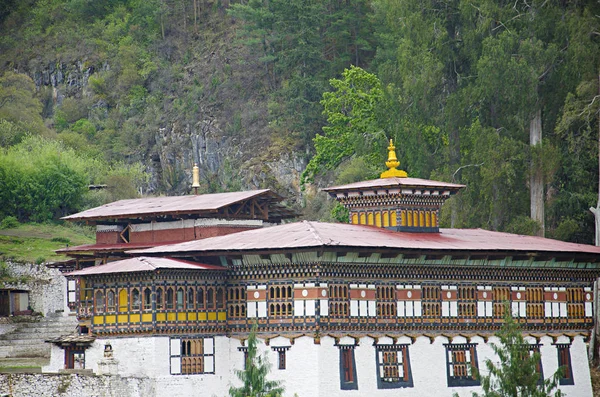
Yiga Choezin serves as a meditation center and monastery that focuses on intensive retreat practices and advanced meditation training. Established in the 1980s, this institution provides a quiet environment for serious practitioners to engage in extended meditation retreats that can last for months or even years.
The center’s remote location, about 4 miles from McLeod Ganj ensures minimal distractions for those seeking deep spiritual practice. The buildings are specifically designed with meditation in mind, featuring individual retreat cabins and communal spaces that support both solitary and group practice.
Where Ancient Wisdom Meets Modern Reality
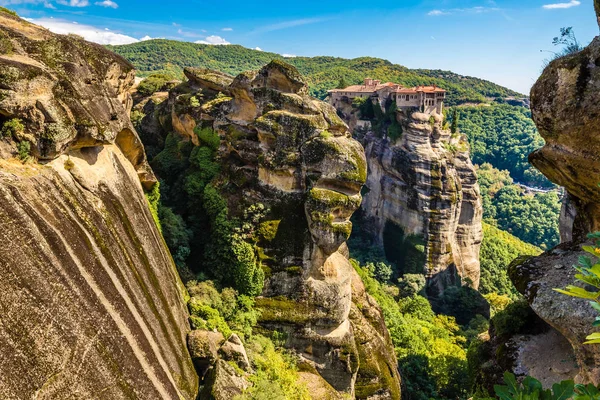
These monasteries represent far more than historical preservation efforts. They’re living institutions that continue to evolve while maintaining their essential spiritual purpose, adapting to challenges that would’ve been unimaginable to their founders. Many now offer programs in multiple languages, use modern technology for education, and engage with global communities through online teachings.
The presence of these monasteries has transformed Dharamshala into a unique cultural bridge between East and West, where traditional Buddhist practices meet contemporary spiritual seeking in ways that benefit both traditions and modern practitioners.
Like Travel Pug’s content? Follow us on MSN.
More from Travel Pug

- 20 Best Beach Towns in the Carolinas
- 13 Destinations Where Tourists Regularly Regret Their Trip
- 20 Things You Actually Get in First Class
- 20 Small Airports With Aviation Museums
- 20 Places in the U.S. That Are Perfect for a Reset Trip
Like Travel Pug’s content? Follow us on MSN.
